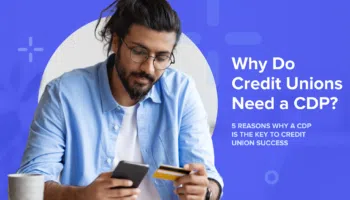There are no ifs, ands, or buts about it — customers want 1:1 personalization from their favorite brands. Marketers want to provide these experiences as well because they bolster brand efforts, foster loyalty, and increase revenue all in one fell swoop. But, for overloaded marketers true personalization is more easily said than done, especially given that this ability to personalize at scale is relatively new and there’s no tried and true guide to making it a reality. To complicate matters further, most marketing teams don’t have endless engineering resources at their disposal.
95% of marketers don’t personalize at the 1:1 level across all channels, which isn’t surprising considering the barriers to entry can be almost insurmountable. That is unless marketers take the right steps and bring in the proper technology to get the job done. If there were endless hours in the day marketers would probably get this all bootstrapped by hand in order to provide personalization. Alas, we all only get 24 hours (and marketers being cornered into data science functions isn’t ideal), but there is a solution out there to help marketers execute true personalization sans huge engineering teams and limitless budgets. Let us walk you through what your business needs to achieve true, 1:1 personalization.



